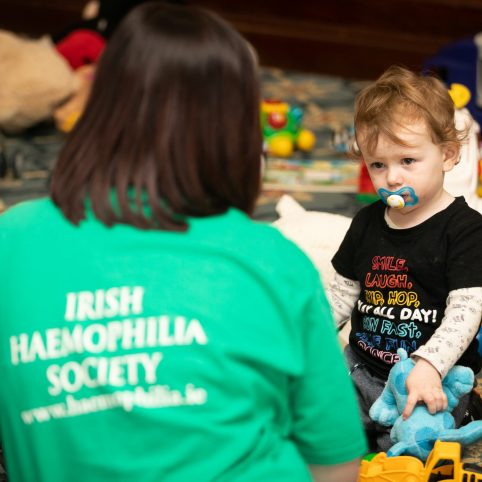Children are treated prophylactically to prevent bleeding episodes and can look forward to a normal quality of life with no interruption in their education and have the prospect of a good career. In contrast, many older people with bleeding disorder, in Ireland live with the effects of having inadequate treatment in the past. The vast majority of adults are also now treated using prophylaxis to prevent bleeding episodes.
Home Treatment
Home treatment is the ideal method of treatment from a medical viewpoint as a minimum amount of time is lost between the recognition of a bleed and treatment. This has many advantages. It reduces the disruption caused by a bleeding episode to the person with haemophilia and their family, and the patient feels more able to control his condition.
The benefits of home treatment not only include increased independence and the bonus of not having to travel to the hospital at all hours for treatment, but school attendance is more regular and participation in social activities is easier. If bleeds are treated promptly the period of incapacity caused by each episode is reduced.
In adults and teenagers, this procedure is usually carried out by the affected person. In younger children and babies, this can be taught to parents. Sometimes, it can be difficult to find a vein and a device called a port-a-cath can be used to facilitate venous access. Some therapies are given subcutaneously (under the skin) which avoids the need for regular access to veins. However, to treat a bleed this still requires vein access, and it is an important skill to learn and maintain.
On demand treatment is where factor concentrate is infused when a bleed occurs. Again, this is very often carried out in the home setting to allow for early treatment of a bleeding episode. With newer therapies, you may not have a bleed treatment at home. You should discuss with your doctor, your preferences on what you would like to do in the event of a bleed.
Prophylactic treatment is recognised as the optimum therapy for haemophilia, as it prevents the vast majority of joint and muscle damage and allows the child or person with haemophilia to have a normal quality of life.
With the increased use of the subcutaneous therapy emicizumab, there has been a significant decrease in the requirement for training of parents and persons with hemophilia in home infusion. The majority of children with severe hemophilia A are now treated with emicizumab and the vast majority of indwelling portacaths used in young children for infusion of factor concentrates have now been removed.
